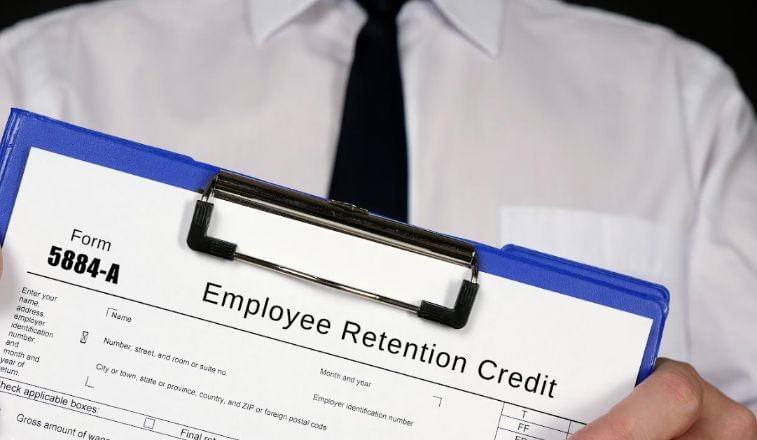Find out everything you need to know about the Employee Retention Credit: what it does, how your business can receive it, and what to expect if you qualify.
It’s hard to over-emphasize how much the COVID-19 Pandemic affected businesses all over the world. The fact is, you can still see effects years after the first lockdowns took place in March of 2020.
To combat these consequences, governments swiftly moved into action. One way the US Government protected the economy is by instituting the Employee Retention Credit. This is also called the Employee Retention Tax Credit and is known by the acronyms ERC and ERTC.
What is the ERC? Who benefits and how? Most importantly, how do you receive the ERC? We’ll answer all of these questions and more.
What is the Employee Retention Credit?
The ERC is basically designed to prevent companies and businesses from laying off employees. How?
By giving businesses a credit to claim on both qualified wages and some costs related to health insurance, companies across the country were incentivised to maintain their employees rather than laying them off–an action which would have triggered an economic crisis.
This credit is to maintain their employee payroll, giving businesses the needed funds to keep employees. It was originally introduced in the Coronavirus Aid, Relief, and Economic Security Act (CARES).
Back in 2020 when it was initially introduced, the tax credit was worth 50% of qualified employee wages but limited to $10,000 for any one employee. This granted a maximum credit of $5,000 for wages paid from March 13, 2020, to December 31, 2021.
It has since been updated, increasing the percentage of qualified wages to 70% for 2021. The per-employee wage limit was increased from $10,000 per year to $10,000 per quarter.
While different rules apply to employers with under 500 employees and under 100 employees, this credit is available to all eligible employers of any size that paid qualified wages to their employees.
Who is eligible for the Employee Retention Credit?
The American Rescue Plan Act of 2021 allowed for the majority of US employers to qualify for the credit. This includes colleges, hospitals, universities, and 501(c) organizations. The one requirement is that all qualifying businesses have been in existence since February 15, 2020.
This also includes businesses who took out a loan under the Paycheck Protection Program (PPP)–a group who originally didn’t qualify for the ERC.
Your business should be able to tell right away if they qualify for the ERC if:
- You had to partially or fully suspend your business due to the COVID-19 Pandemic or had to reduce business hours due to federal, state, or local orders. (Essential businesses or businesses that physically closed but could continue to work remotely generally don’t qualify.)
- You had a significant decline in gross receipts.
If your business experienced one of these two effects from the COVID-19 Pandemic, it’s very likely that you qualify for the ERC. Read on to learn what you need to do to claim it.
What does your business need to claim the ERC?
It all starts with the tax Form 941, which is an Employer’s Quarterly Federal Tax Return. Employers first report total qualified wages. From there, the related COVID-19 employee retention credit for the quarter (based on the qualified wages that were paid) can be applied for.
However, there is far more than just a tax form involved.
How to apply for the ERC–and how much you’ll receive from it–has to do with the size, type, and location of your business. Not only that, but there are also other contributing factors that influence how much the government issues for your ERC.
Want to make all of this prep work easy? Then let us help. Progressive Payment Solution specializes in the Employee Retention Credit: we know exactly how to make sure businesses of all types and sizes qualify and maximize their ERC.
If you’re ready to apply, click here to get started. If it turns out you don’t qualify, it won’t cost you anything.
How is the ERC credit paid?
Once Progressive Payment Solutions has helped a business submit all of the necessary documents and paperwork, that business can expect a direct deposit into their bank account from the IRS.
Not only that, but qualifying businesses can also reduce payroll taxes sent to the IRS, further increasing the amount saved through the program.
Can you get ERC and PPP?
At first, a business who received a Paycheck Protection Program loan (PPP) couldn’t also qualify to receive the ERC. However, this has changed since the beginning of the pandemic. Thanks to government policy changes, companies who already received a PP loan can now also qualify to receive the ERC.
How long will the ERC be available?
Even though the worst of the COVID-19 pandemic and its effects are behind us, that doesn’t mean these benefits have expired. Fortunately, qualifying businesses who have until 2024 to participate in the ERC program.
Summary
There’s few “nothing to lose” situations in life, but qualifying for the ERC is one of them. Businesses of all types and sizes can qualify for the Employee Retention Credit. It will only cost a small percentage. And if your business doesn’t qualify, you won’t pay a cent.
Let Progressive Payment Solutions walk you through each step of the process. We’ll save you time and hassle while making sure you get the maximum amount from this program. Our local, seasoned experts know just what to do to help your business receive your ERC. Get started today by clicking here.
Disclaimer: This post contains affiliate links, which means that if you click on one of the product links and then purchase the product, we’ll receive a commission. No worries though, you’ll still pay the standard amount so there’s no cost on your part.
